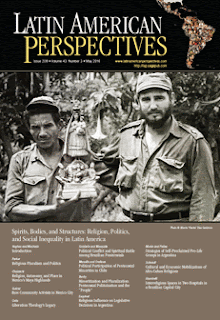by Juan Cruz Esquivel
The interactions between the state and religious institutions in Argentina are expressed on the municipal, provincial, and national levels, in the sphere of legislation and public policy, and in a wide range of undefined informal relationships. Politics and religion have historically been intertwined, and their relationship can be described as subsidiary laicism, in which the recognition of civil rights coexists with significant intervention of the Church in the implementation of public policy and in which state support of religion at an intermediate level is considered legitimate. Religious institutions and convictions influence votes in the Congress on laws expanding sexual and reproductive rights, and under such influence provincial and municipal governments delay the implementation of those laws.
Las interacciones entre las instituciones estatales y religiosas en la Argentina se expresan a nivel municipal, provincial y nacional en el ámbito de la legislación y la política pública, y en una amplia gama de relaciones informales no definidas. La política y la religión han sido entrelazadas históricamente, y se puede describir su relación como laicismo ancilar, donde el reconocimiento de los derechos civiles coexiste con apreciable intervención de la Iglesia en la implementación de la política pública, y en dónde el apoyo estatal a la religión a un nivel intermedio se considera legítimo. Las instituciones y convicciones religiosas influyen sobre la votación en el Congreso sobre leyes ampliando los derechos sexuales y reproductivos, y bajo tal influencia los gobiernos provinciales y municipales retrasan la implementación de aquellas leyes.
CLICK TO READ THE FULL ARTICLE
Latin American Perspectives
May 2016 vol. 43 no. 3 Abstract 133-143


No comments:
Post a Comment